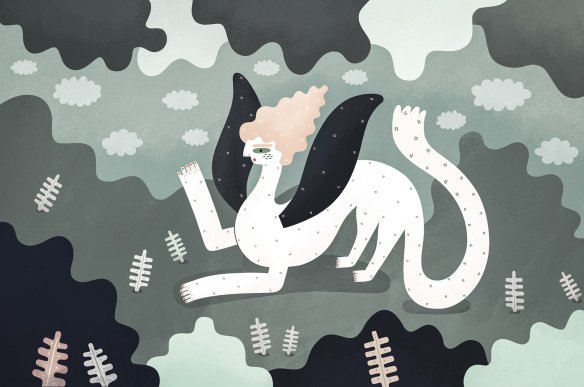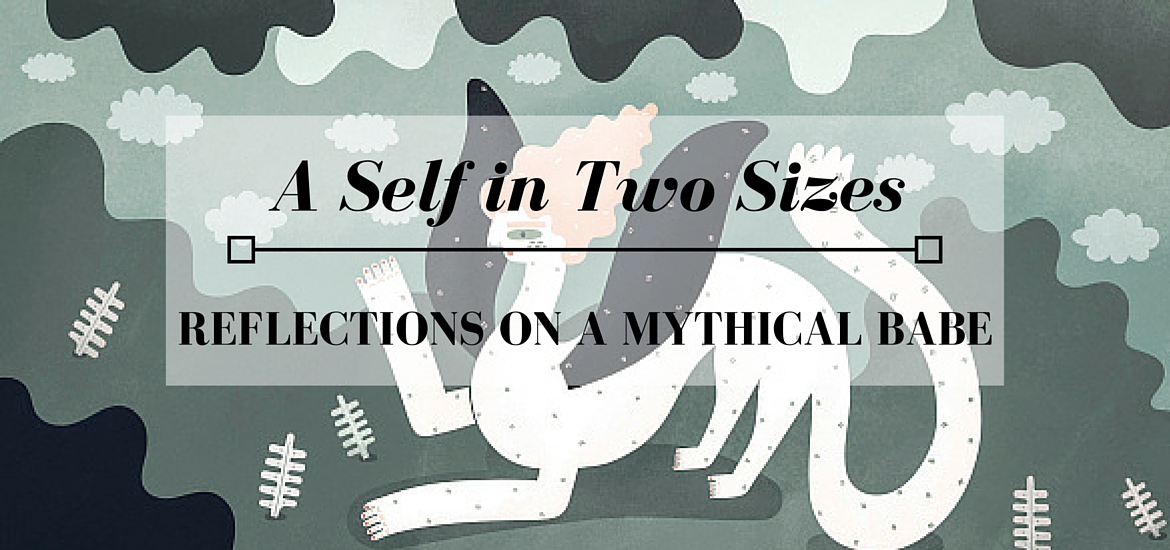Sarah Goodreau is an illustrator I really enjoy, and recently she had a piece that I couldn’t not share with you. It’s called “A Mythical Babe.”

The color palette is a thing of dreams, somehow soft and sleepy. But the shapes are all movement — hair, wings, tail, arm — this is a babe in action.
What exactly is she? There’s something sphinx-like, something dragon-esque, definitely feminine. Her expression is hard to read, but the hand seems to be waving in a friendly way — or is it raised to keep us away?
But what I love most about this work is the freedom to imagine her as any range of sizes all at the same time. Because the scenery is filled with shapes that conjure connotations rather than strictly depicting a defined setting, she can be large or small.
In one view, I see her as larger than the Great Sphinx. She borders on being called a mythical beast, but for her obvious femininity. She towers over trees in the bottom half of the image. Bulbous clouds seem minuscule compared to her girth. I imagine her wings cause hurricanes and her tail has the power to protect against enemies and to take out small villages in one swoop. She is fierce, commanding, unstoppable.
And then I shift my gaze, and suddenly she’s itty bitty. The trees dwindle into succulents, or even smaller — mitochondria. Individual drops of water mist hover in the background. Her wings are as fragile as a dragonfly’s, her tail wraps around her to try to preserve a bit of warmth. She can hide so thoroughly her predator will believe she vanished.
I think what I love about this double-vision is that I have both those mythical babes inside my own self.
I have the fierce and expansive woman who can control a room and a situation. And I also (sometimes at the very same time) have the ability to make myself small enough to evade what pursues me. When I need to. When being seen is unsafe.
Do you identify more with the creature that towers and must be addressed, or the creature that can evade and hide?
What does the image conjure for you?
And seriously, go check out Sarah Goodreau’s site. She has lots of beautiful work that play with fantastical/mythical themes.



